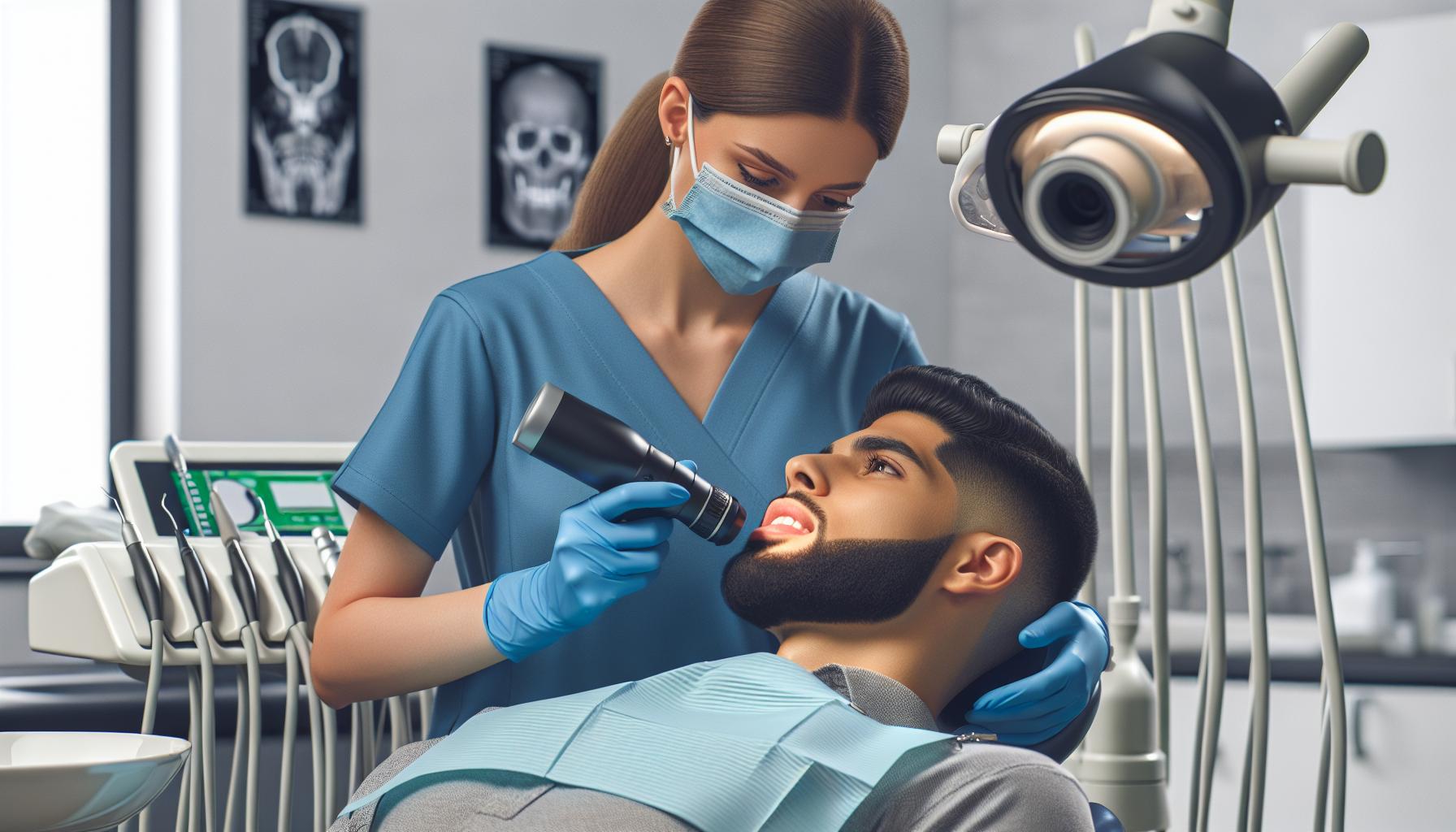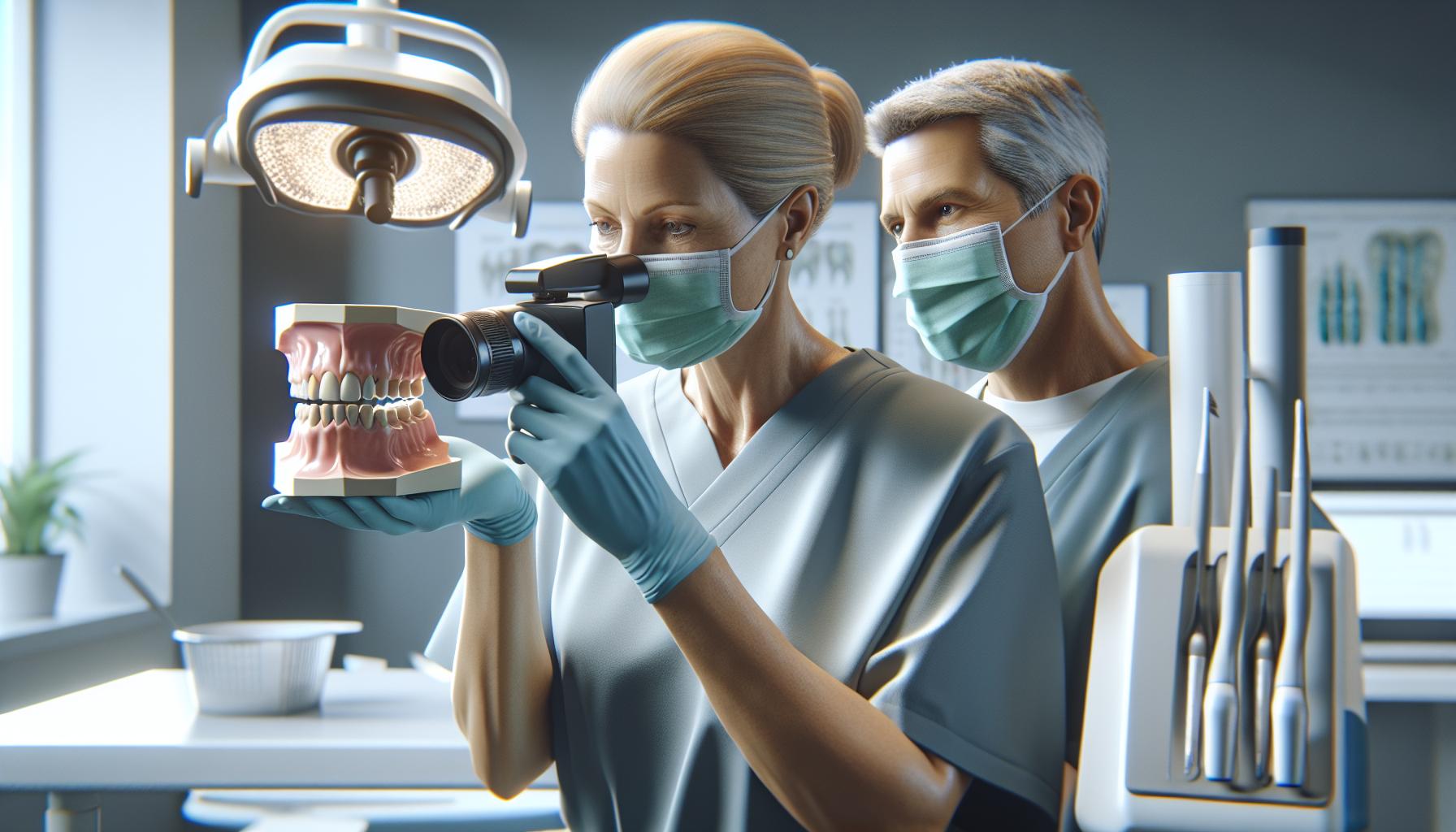Choosing the right intraoral camera can significantly improve dental practice and patient communication. With various options available, understanding the key features—such as image quality, ease of use, and connectivity—becomes essential. This article explores these critical aspects to help dental professionals make informed decisions that improve their diagnostic capabilities and patient care.
Importance of Intraoral Cameras
Intraoral cameras play a crucial role in modern dental practices. They improve diagnostic capabilities by providing clear, detailed images of a patient’s oral condition. High-quality images enable dentists to identify issues like cavities, gum disease, and other abnormalities more effectively.
Intraoral cameras improve patient communication. Visual aids help patients understand their dental health better. Patients can see exactly what the dentist sees, leading to informed decisions about treatment options. This transparency fosters trust between the dentist and patient.
Intraoral cameras also streamline practice efficiency. Quick image capture and easy integration with practice management software reduce time spent on diagnostics. Dentists can efficiently document patient progress and share information with specialists if needed.
These cameras support enhanced treatment planning. Precise imaging assists in creating tailored treatment plans based on each patient’s unique needs. Intraoral cameras also facilitate patient education, allowing dentists to explain procedures and expected outcomes visually.
The overall importance of intraoral cameras stems from their ability to improve diagnostic accuracy, improve patient communication, and increase practice efficiency, ultimately leading to better patient care.
Key Features to Consider

Choosing the right intraoral camera involves several critical features that directly impact its performance and utility for dental practices.
Image Quality
Image quality remains a primary consideration. High-resolution cameras produce clearer, more detailed images, allowing dentists to identify dental issues more accurately. Look for cameras with at least 1 megapixel resolution, as this facilitates precise diagnosis of conditions such as cavities and periodontal disease. Additionally, consider cameras that support high-definition (HD) video capabilities, providing real-time visuals that improve patient education and treatment planning.
Ease of Use
Ease of use significantly affects the efficiency of intraoral cameras. Select cameras with a user-friendly interface that allows for quick adjustments to settings, focusing, and image capture. Ergonomic designs promote comfortable handling during procedures, making it easier for dental professionals to operate the device with precision. With options like the intraoral kamera from ProDENT, dentists benefit from streamlined workflow features, including one-touch capture buttons, which reduce time spent on technicalities and improve patient interaction.
Portability
Portability is essential for the practical application of intraoral cameras in dental clinics. Lightweight and compact designs enable easy transport between operatories or during off-site evaluations. Rechargeable battery options improve mobility by eliminating reliance on outlet availability, allowing for uninterrupted use during patient consultations. Ensure that the camera’s case includes protective features to safeguard against damage during transport, maintaining its functionality in diverse settings.
Connectivity Options
Connectivity options are critical in selecting an intraoral camera, as they affect how the device integrates with practice management software and enhances workflow.
Wireless vs. Wired
Wireless and wired options each offer distinct advantages. Wireless intraoral cameras provide mobility and flexibility, allowing dentists to move freely during examinations without cables getting in the way. They’re typically easier to use and minimize clutter in the operatory. Conversely, wired intraoral cameras often deliver a stable and uninterrupted connection, which can result in superior real-time image transmission. The choice between wireless and wired setups depends on the specific needs of the dental practice, including workflow preferences and the importance of mobility versus stability.
Compatibility with Software
Compatibility with existing software systems is essential for seamless integration. Intraoral cameras that support standardized protocols, like DICOM or TWAIN, ensure easy connectivity with imaging and practice management software. This compatibility enhances data sharing between systems, streamlining documentation and improving efficiency. Dental professionals should verify that the camera they choose aligns well with their current software infrastructure, as this can significantly impact overall functionality and user experience.
Lighting and Focus
Lighting and focus are critical features when selecting an intraoral camera. Proper illumination ensures clear, detailed images, while focus affects the sharpness and clarity of those images.
Lighting Types
- LED Lights: Bright and efficient, LED lights provide even illumination without generating excessive heat. They improve visibility of oral structures.
- Variable Lighting: Look for cameras with adjustable brightness settings. Adjustable lighting accommodates various patient conditions, reducing shadows and improving image quality.
- Auto-Focus: Auto-focus technology adjusts the camera’s focus automatically, ensuring sharp images regardless of the distance from the target area. This feature simplifies usage and enhances efficiency.
- Manual Focus Options: Cameras that offer manual focus allow dental professionals to adjust focus according to specific needs. This provides greater control and can improve image detail in complex cases.
Choosing a camera with optimal lighting and focus capabilities leads to accurate diagnostics and effective patient communication. High-quality images foster better understanding, making treatment discussions more informative and straightforward.
Durability and Warranty
Durability ensures an intraoral camera withstands daily use in a dental practice. Look for cameras made from high-quality materials that resist wear from constant handling and cleaning. Cameras with reinforced casings often provide added protection against drops and spills, which can occur during procedures.
Warranty coverage plays a critical role when selecting an intraoral camera. A warranty of at least one to two years demonstrates the manufacturer’s confidence in their product’s reliability. Longer warranty periods may indicate better quality and support, addressing potential defects or malfunctions. Understand what the warranty includes, such as parts, labor, and accidental damage coverage, to make an informed decision.
Consider user reviews and industry feedback that may reveal longevity and durability experiences with specific camera models. Choose products recognized for their robustness, minimizing replacement costs and downtime in the practice. Prioritize options with comprehensive customer support to help during the warranty period, ensuring prompt assistance if any issues arise.
Conclusion
Choosing the right intraoral camera can significantly impact a dental practice’s efficiency and patient engagement. By prioritizing features like image quality portability and ease of use dental professionals can improve their diagnostic capabilities and improve patient education.
Investing in a durable camera with solid connectivity options ensures seamless integration into existing workflows while supporting effective communication with patients. With the right intraoral camera in hand practices can improve their standards of care and foster stronger relationships with their patients. Making an informed decision today will lead to better outcomes for both dentists and patients alike.
Frequently Asked Questions
What is the purpose of an intraoral camera in dentistry?
An intraoral camera helps dentists capture detailed images of patients’ mouths, which enhances diagnostic capabilities. It allows for better identification of issues like cavities and gum disease. Additionally, it improves patient understanding and fosters trust through visual aids, which facilitate informed treatment decisions.
How do I choose the right intraoral camera for my practice?
When selecting an intraoral camera, consider key features like image quality (at least 1 megapixel), ease of use, portability, and connectivity options. Look for cameras that integrate well with practice management software and offer durable designs to withstand daily use.
What are the advantages of using wireless intraoral cameras?
Wireless intraoral cameras offer enhanced mobility and ease of use, allowing dentists to move freely during procedures without being hindered by cords. This flexibility can improve workflow efficiency and patient interaction during examinations.
Why is image quality important in intraoral cameras?
High image quality is crucial for accurate diagnosis and effective patient education. Cameras with at least 1 megapixel resolution and HD capabilities capture detailed images that help dentists identify oral health issues and communicate findings clearly to patients.
What should I look for in terms of battery life for portable cameras?
When choosing a portable intraoral camera, opt for models with rechargeable batteries that provide long usage times. Look for cameras designed for quick recharging and those that won’t interrupt patient consultations due to battery depletion.
How does lighting affect the performance of an intraoral camera?
Proper lighting is essential for capturing clear and detailed images. Intraoral cameras with LED lights and adjustable brightness settings can enhance visibility in various conditions, leading to improved diagnostic accuracy and effective patient communication.
What types of connectivity should I consider?
Choose an intraoral camera that offers versatile connectivity options, such as USB or wireless capabilities. Ensuring compatibility with your practice management software, like DICOM or TWAIN, will facilitate seamless integration and enhance data sharing.
Why is warranty and durability important for intraoral cameras?
Durability and warranty are crucial for ensuring long-term use and reliability of the intraoral camera. Look for models made from high-quality materials and those that come with a warranty of at least one to two years for peace of mind and manufacturer confidence.
Can intraoral cameras help with patient education?
Yes, intraoral cameras significantly enhance patient education by providing visual aids. When patients can see their own dental issues, they are more likely to understand the necessary treatments and participate actively in their oral health decisions.
